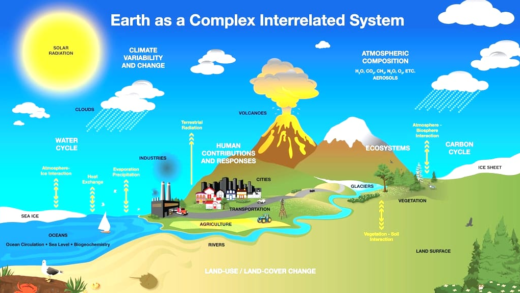This article explores the world’s longest rivers, detailing their lengths, measurement methods, and ecological significance. It covers key rivers like the Nile, Amazon, Yangtze, and Mississippi, highlighting their tributaries and geographical importance, including the Yenisei. The article emphasizes the critical roles rivers play in ecosystems, supporting biodiversity and providing vital resources.
The Longest Rivers
The longest rivers in the world are remarkable natural features that shape our planet. Understanding their lengths and characteristics provides insight into their ecological significance and geographical features. Here’s a list of the nine longest rivers:
- Nile River – 6,650 km
- Amazon River – 6,400 km
- Yangtze River – 6,300 km
- Mississippi-Missouri River System – 6,275 km
- Yenisei River – 5,539 km
- Yellow River (Huang He) – 5,464 km
- Ob-Irtysh River System – 5,410 km
- Río Paraná – 4,880 km
- Congo River – 4,700 km
These rivers are not just lengthy; they are also crucial to the ecosystems and communities that depend on them.
Measuring River Length
How is river length measured? The length of a river is determined through various methods, primarily using satellite imagery and geographical information systems (GIS). These technologies allow researchers to track the river’s path accurately, from its source to its mouth.
One common approach is to follow the river’s main course, identifying curves and bends that contribute to its total length. For instance, the Amazon’s length can vary based on seasonal changes and water levels. Additionally, hydrologists may use topographic maps to assess river systems, considering tributaries and other features that influence measurement.
Accurate measurements are essential for ecological studies and water resource management, as they help in understanding the river’s role in its environment.
Changes in River Length
What causes the length of a river to change over time? Several factors contribute to the alteration of river lengths, both natural and human-made. Erosion, sediment deposition, and climatic changes can shift a river’s course. For example, floods can cause rivers to change direction, while droughts may expose new pathways.
Human activities such as dam construction, land development, and deforestation can also significantly affect river lengths. Dams can block water flow, leading to shorter river sections upstream. Furthermore, urbanization often alters natural waterways, impacting their length and flow.
Understanding these changes is vital for environmental conservation efforts and maintaining the health of river ecosystems.
The Nile River: Key Characteristics
The Nile River, recognized as the longest river in the world, stretches approximately 6,650 kilometers. Its significance goes beyond mere length; it is a lifeline for millions in northeastern Africa. The Nile flows through eleven countries, including Uganda, Sudan, and Egypt, before finally emptying into the Mediterranean Sea.
One of the key features of the Nile is its two major tributaries: the White Nile and the Blue Nile. The White Nile, originating in East Africa, is often considered the primary stream due to its longer length. Meanwhile, the Blue Nile, which starts in Ethiopia, contributes most of the water and fertile soil during seasonal floods.
The Nile’s ecological importance is profound. It supports diverse wildlife, including crocodiles, hippos, and various fish species. Additionally, the river’s banks are home to rich agricultural lands, essential for the livelihoods of local communities. Historically, the Nile has been revered in Egyptian culture, symbolizing life and prosperity.
The Amazon’s Uniqueness
The Amazon River, while often debated in terms of its length, is undeniably unique. Measuring around 6,400 kilometers, it is the largest river by discharge volume in the world. The Amazon basin, which covers approximately 5.5 million square kilometers, is a hotspot for biodiversity, hosting over 40,000 plant species and 2.5 million insect species.
What sets the Amazon apart is not just its size but its ecological richness. It is home to a staggering variety of animals, including the jaguar, pink river dolphin, and countless bird species. The river’s unique floodplain ecosystems play a crucial role in regulating global climate by absorbing carbon dioxide.
Additionally, the Amazon River is vital for indigenous communities, providing food, transportation, and cultural identity. As environmental threats loom, protecting this river becomes paramount for maintaining biodiversity and combating climate change.
Yangtze River Comparison
The Yangtze River, measuring about 6,300 kilometers, is the longest river in Asia and ranks third globally. Its significance is multifaceted, serving as a crucial waterway for transport, irrigation, and hydroelectric power generation.
When compared to the Nile and Amazon, the Yangtze stands out due to its economic impact. The river basin supports over 400 million people, making it one of the most populous regions in the world. The Three Gorges Dam, located on the Yangtze, is the largest hydroelectric power station globally, highlighting the river’s role in energy production.
In terms of biodiversity, the Yangtze is home to unique species such as the Yangtze giant softshell turtle and the Chinese sturgeon, which are now endangered. This highlights the necessity of conservation efforts to protect both the river and its inhabitants. Overall, the Yangtze River’s combination of length, economic importance, and ecological significance makes it a vital feature of the landscape, worthy of comparison with the Nile and Amazon.
Main Tributaries of the Mississippi River
The Mississippi River is not just a major river; it is also defined by its numerous tributaries that contribute to its vast watershed. These tributaries play a crucial role in the river’s ecosystem and hydrology. Here are some of the main tributaries:
- Missouri River: The longest tributary of the Mississippi, it adds significant water volume and drains parts of the Rocky Mountains.
- Ohio River: Flowing into the Mississippi at Cairo, Illinois, the Ohio River is vital for commerce and provides water to millions.
- Arkansas River: This river brings water from Colorado and is crucial for agriculture in the region.
- Red River: Originating in Texas, it contributes to the Mississippi’s flow and supports diverse wildlife.
- Tennessee River: Known for its winding path, it enriches the Mississippi with nutrients and aids in flood control.
These tributaries not only enhance the Mississippi River’s flow but also support various ecosystems and human activities along their banks.
Geographical Significance of the Yenisei River
The Yenisei River is one of the most significant rivers in Russia, stretching approximately 5,539 kilometers. It plays a crucial role in the geography of Central Siberia. The river begins in Mongolia and flows northward into the Arctic Ocean. Its geographical importance includes:
- Natural Resource Transportation: The Yenisei serves as a vital waterway for transporting goods and natural resources, particularly timber and minerals.
- Ecological Diversity: The river supports diverse ecosystems, including unique species of fish and wildlife adapted to its varying climates.
- Climate Regulation: It influences the local climate, contributing to the hydrological cycle in Siberia.
- Cultural Importance: Indigenous communities rely on the Yenisei for their livelihoods, using its waters for fishing and transportation.
Overall, the Yenisei River is not just a geographical feature; it is a lifeline for the surrounding environments and communities.
Role of Rivers in Ecosystems
Rivers play a fundamental role in ecosystems, acting as arteries that nourish the land. They are essential for various reasons:
- Habitat Creation: Rivers provide habitats for countless species, from fish and amphibians to birds and mammals.
- Nutrient Transport: They carry nutrients that support plant life along their banks, promoting biodiversity.
- Water Supply: Rivers are a source of fresh water for drinking, irrigation, and industrial use.
- Flood Regulation: Healthy river systems help mitigate flooding by absorbing excess rainfall and snowmelt.
Moreover, rivers contribute to the overall health of the planet by supporting ecosystems that help filter pollutants and regulate climate. Protecting rivers is vital for sustaining biodiversity and ensuring clean water for future generations.





Comments are closed.